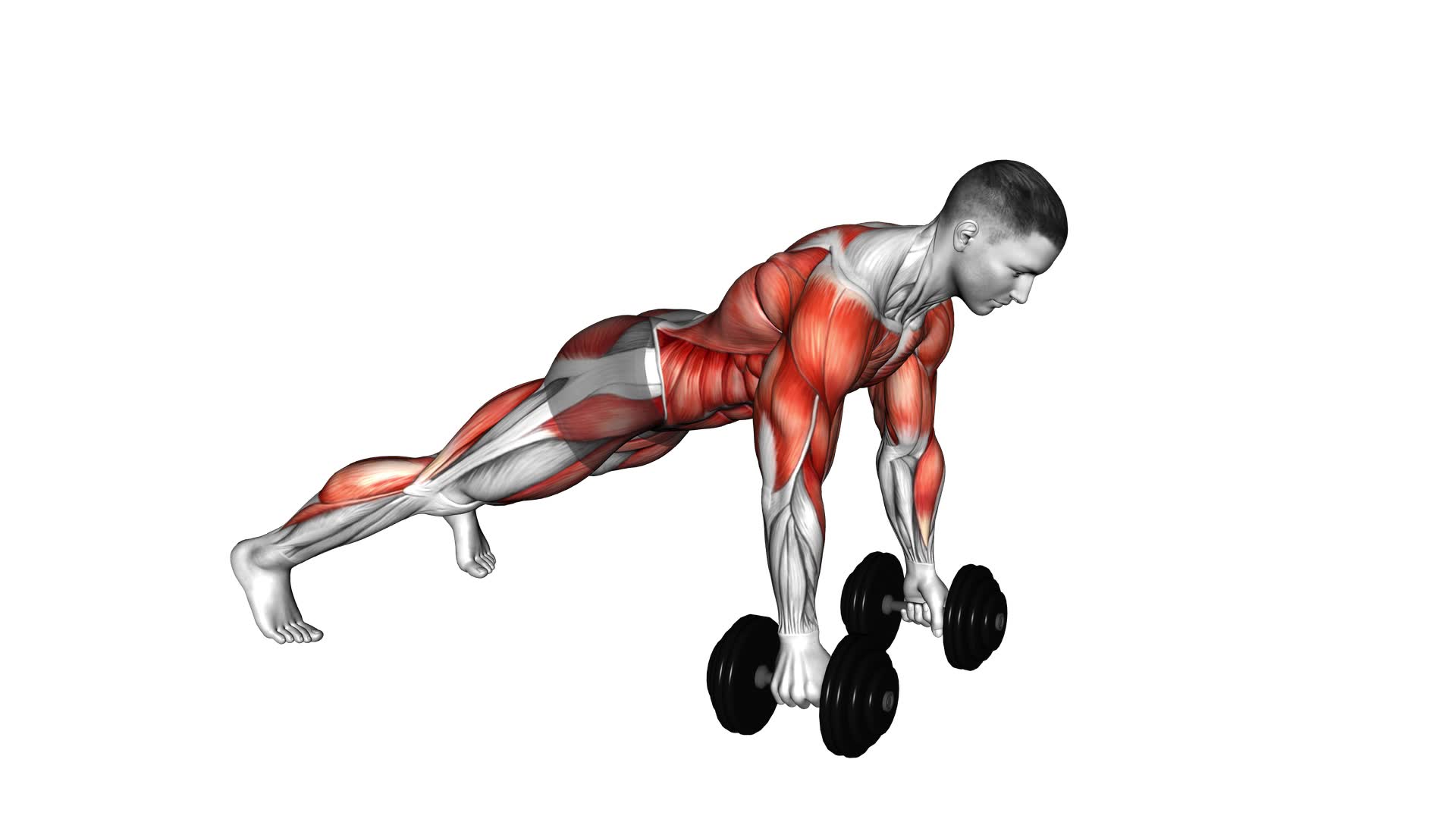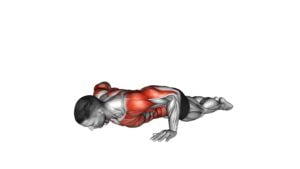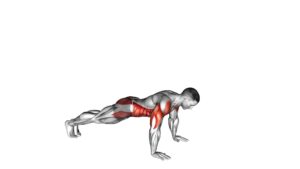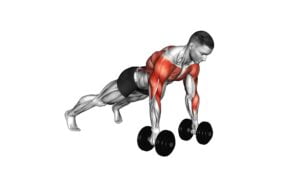Plank Push-Up Row – Video Exercise Guide & Tips

Are you looking to strengthen your core, build upper body strength, and improve your overall fitness level? Look no further than the plank push-up row!
Watch This Exercise Video
This exercise combines the benefits of a plank, push-up, and row into one dynamic movement. In just a few minutes a day, you can sculpt your muscles and boost your endurance.
Follow this video exercise guide and learn valuable tips to perfect your form and avoid common mistakes.
Get ready to take your workout to the next level!
Key Takeaways
- The Plank Push-Up Row targets multiple muscle groups simultaneously, making it a efficient exercise.
- It helps to build a strong and stable core, improving overall stability and posture.
- The exercise enhances upper body strength and definition, particularly in the shoulders and back.
- There are variations available for different fitness levels, allowing individuals to adjust the intensity based on their capabilities.
Benefits of the Plank Push-Up Row
To fully understand the benefits of the Plank Push-Up Row, let's dive into how this exercise can improve your overall strength and stability.
The Plank Push-Up Row is a powerful compound exercise that targets multiple muscle groups simultaneously. One of the key benefits of this exercise is core strengthening. As you perform the push-up and row motions, your core muscles are engaged to maintain stability and control throughout the movement. This helps to build a strong and stable core, which is essential for various daily activities and sports performance.
Additionally, the Plank Push-Up Row also provides significant upper body engagement. The push-up portion targets your chest, shoulders, and triceps, helping to build strength and definition in these areas. The row motion targets your back muscles, specifically the lats, rhomboids, and rear delts, which helps improve posture and overall upper body strength. By incorporating these two movements into one exercise, you're able to efficiently work multiple muscle groups, saving you time and maximizing your workout.
Now that we've explored the benefits of the Plank Push-Up Row, let's move on to discussing the proper form for this exercise.
Proper Form for the Plank Push-Up Row
To perform the Plank Push-Up Row with proper form, follow these steps:
- Begin in a high plank position with your hands directly under your shoulders and your feet hip-width apart.
- Engage your core and maintain a straight line from your head to your heels.
- Lower your body down into a push-up, keeping your elbows close to your sides.
- As you push back up, shift your weight to one side and lift the opposite hand off the ground, pulling your elbow back towards your body.
- Lower your hand back down and repeat on the other side.
Common mistakes to avoid when performing the Plank Push-Up Row include:
- Allowing your hips to sag or lift up too high, compromising the stability of your core.
- Flaring your elbows out to the sides during the push-up, which can strain your shoulder joints.
- Rounding your back or hunching your shoulders, which can lead to poor posture and potential injury.
Variations of the Plank Push-Up Row can be done using dumbbells or kettlebells to add extra resistance, or by performing the exercise on an unstable surface such as a Bosu ball to challenge your balance and stability.
Remember to start with proper form and gradually increase intensity as you become more comfortable with the exercise.
Common Mistakes to Avoid During the Plank Push-Up Row
One common mistake to avoid when performing the Plank Push-Up Row is failing to engage your core consistently throughout the exercise. Engaging your core is crucial because it helps stabilize your body and maintain proper form. Without a strong core, you may experience lower back pain or strain on your shoulders.
Another common mistake is allowing your hips to sag or rise too high during the exercise. This improper technique puts unnecessary stress on your lower back and reduces the effectiveness of the exercise. To maintain proper form, keep your body in a straight line from head to toe throughout the movement.
Additionally, avoid rushing through the exercise and sacrificing proper form for speed. It's important to perform each repetition with control and focus, ensuring that you maintain proper alignment and engage the right muscles.
Variations of the Plank Push-Up Row for Different Fitness Levels
Modify the Plank Push-Up Row according to your fitness level to challenge yourself and progress in your strength training routine. You can adapt this exercise by using different equipment, making modifications, and incorporating progressions. Here are some variations to consider:
- Beginner Level: If you're just starting out, you can perform the Plank Push-Up Row on your knees instead of your toes. This will provide more stability and support as you build strength in your upper body and core.
- Intermediate Level: Once you feel comfortable with the exercise, you can try performing the Plank Push-Up Row on your toes, but with your feet slightly wider apart. This will challenge your balance and engage more muscles in your core.
- Advanced Level: To intensify the exercise, you can add a resistance band or dumbbells to the Plank Push-Up Row. This will increase the load on your muscles and make the exercise more challenging.
- Single-arm Variation: Another way to progress the Plank Push-Up Row is to perform it with one arm at a time. This will require more stability and strength in your core and upper body.
- Elevated Variation: To further challenge yourself, you can perform the Plank Push-Up Row with your feet elevated on a step or bench. This will increase the range of motion and engage more muscles in your upper body.
Tips for Incorporating the Plank Push-Up Row Into Your Workout Routine
When incorporating the Plank Push-Up Row into your workout routine, it's important to focus on proper form and engage your core throughout the exercise. This exercise is a great addition to a HIIT (High-Intensity Interval Training) workout as it targets multiple muscle groups and increases your heart rate.
To incorporate the Plank Push-Up Row into your HIIT routine, start by performing the exercise for 30 seconds, then rest for 15 seconds before moving on to the next exercise. Repeat this circuit for a total of three to four rounds.
For beginners, it's important to start with modifications to ensure proper form and prevent injury. If the full Plank Push-Up Row is too challenging, you can modify it by performing the exercise on your knees instead of your toes. This will help to reduce the amount of weight being lifted and allow you to focus on mastering the movement. Additionally, you can use lighter weights or no weights at all to decrease the intensity.
Remember to always warm up before starting your workout routine and listen to your body. If you experience any pain or discomfort, stop the exercise and consult with a fitness professional.
Frequently Asked Questions
What Are the Primary Muscles Targeted in the Plank Push-Up Row?
The primary muscles targeted in the plank push-up row are your core muscles. This exercise is great for improving core strength and stability.
By incorporating variations of the plank push-up row into your workout routine, you can target different muscle groups and challenge your body in new ways.
It's important to maintain proper form and engage your core throughout the exercise to maximize the benefits and avoid injury.
How Many Repetitions and Sets Should I Perform for the Plank Push-Up Row?
For the plank push-up row, it's important to follow repetition and set guidelines to maximize your workout. Start with 2-3 sets of 8-12 repetitions, and gradually increase as you get stronger.
Remember, variations and modifications can be made to suit your fitness level.
By incorporating this exercise into your routine, you'll be targeting multiple muscle groups and improving core stability.
Can the Plank Push-Up Row Help Improve Posture?
Yes, the plank push-up row can help improve your posture. By incorporating this exercise into your daily routine, you can strengthen your core, upper back, and shoulders, all of which are important for maintaining good posture.
To perform the plank push-up row with proper form and technique, start in a high plank position, perform a push-up, then row one arm up, squeezing your shoulder blades together. Alternate arms for each repetition.
Is It Necessary to Use Dumbbells for the Plank Push-Up Row, or Can I Use Other Equipment?
You don't necessarily need dumbbells for the plank push-up row. There are alternative equipment options you can use, such as resistance bands or kettlebells, to add resistance and challenge your muscles.
If you're a beginner with limited upper body strength, you can modify the exercise by doing a modified plank push-up row on your knees or using lighter weights.
It's important to choose equipment and modifications that suit your fitness level and goals.
Can Beginners With Limited Upper Body Strength Perform the Plank Push-Up Row?
Yes, modifications can be made to the plank push-up row for beginners with limited upper body strength.
You can start by performing the exercise on your knees instead of your toes to decrease the amount of weight you have to push up.
Additionally, you can use lighter dumbbells or even resistance bands to reduce the load on your upper body.
Gradually increasing your upper body strength through regular practice will help you eventually perform the plank push-up row.
Conclusion
In conclusion, the plank push-up row is a highly effective exercise that targets multiple muscle groups, including the core, chest, and back. By maintaining proper form and avoiding common mistakes, you can maximize the benefits of this exercise.
Additionally, there are variations available for different fitness levels, allowing individuals to progress at their own pace.
By incorporating the plank push-up row into your workout routine, you can enhance strength, stability, and overall fitness.

Author
Years ago, the spark of my life’s passion ignited in my mind the moment I stepped into the local gym for the first time. The inaugural bead of perspiration, the initial endeavor, the very first surge of endorphins, and a sense of pride that washed over me post-workout marked the beginning of my deep-seated interest in strength sports, fitness, and sports nutrition. This very curiosity blossomed rapidly into a profound fascination, propelling me to earn a Master’s degree in Physical Education from the Academy of Physical Education in Krakow, followed by a Sports Manager diploma from the Jagiellonian University. My journey of growth led me to gain more specialized qualifications, such as being a certified personal trainer with a focus on sports dietetics, a lifeguard, and an instructor for wellness and corrective gymnastics. Theoretical knowledge paired seamlessly with practical experience, reinforcing my belief that the transformation of individuals under my guidance was also a reflection of my personal growth. This belief holds true even today. Each day, I strive to push the boundaries and explore new realms. These realms gently elevate me to greater heights. The unique combination of passion for my field and the continuous quest for growth fuels my drive to break new ground.







